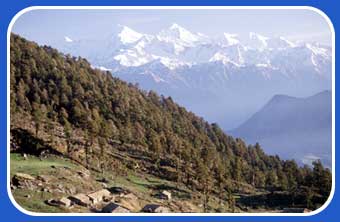|
|

|
|
|
|
| |
|
|
|
|
| |
 |
Welcome
to the north-east region of
India! Here, people live in
the shadow of one of the world's
mightiest mountain ranges called
the Himalayas. The Himalayas
stretch for 2,400 km across
the north of India.
|
|
|
|
|
|
|
|
|
|
|
|
|
| |
 ©Sudhir
Anwar/Panos Pictures
©Sudhir
Anwar/Panos Pictures |
|
|
|
|
|
|
|
|
|
| |
| Isn't
the world's highest mountain in
the Himalayas? |
|
 |
Yes,
at 8,848 metres, Mount Everest
is the world's highest mountain.
But Mount Everest is actually
in Nepal, one of India's neighbours.
The highest mountain in the Indian
Himalayas is called Mount Kanchenjunga,
which has an altitude
of 8,598 metres. |
 |
Visit
the Autumn 2000 edition of Global
Eye Primary for more facts on
mountains, and why people are
trying to clean up Mount Everest.
 |
| Fossils
of sea creatures have been
found high up in the mountains
of the Himalayas. To find
out why... |
 |
|
|
|
|
|
|
|
|
|
|
|
|
|
|
| |
|
|
| Much
of the rest of the region is covered
with rugged, forested hills. Melting
ice flows down the slopes making rivers
that cut valleys through the landscape. |
|
|
|
|
|
|
|
|
|
|
|
| |
 ©Paul
Smith/Panos Pictures.
©Paul
Smith/Panos Pictures. |
|
|
|
|
|
|
|
|
|
|
| |
 |
With
all these hills and mountains, is it wet and
cold in the north-east of India? |
| Go to
the next page to find out! |
|
|
|
|
|
|
|
|
|
|
|
|
|
|
 |
 |
|
|

